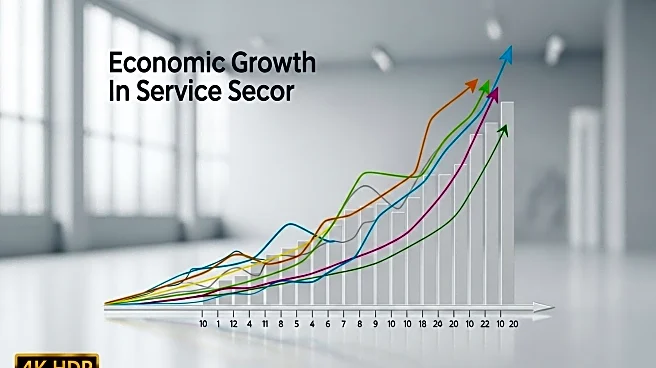What's Happening?
The U.S. services sector experienced growth in August, as indicated by the Institute for Supply Management's nonmanufacturing PMI, which rose to 52.0 from 50.1 in July. This growth comes amid easing labor market conditions, with employment remaining subdued. Economists have pointed to President Trump's tariffs as a factor eroding labor market resilience. The ISM's employment measure showed contraction for the third consecutive month, aligning with other indicators of labor market slowdown. The Federal Reserve is considering a rate cut at its upcoming meeting, balancing inflation concerns with labor market risks.
Why It's Important?
The services sector, accounting for over two-thirds of the U.S. economy, is a key driver of economic activity. Its growth suggests resilience despite labor market challenges, potentially supporting broader economic stability. However, weak employment figures highlight ongoing labor market issues, which could affect consumer spending and business investment. The Federal Reserve's monetary policy decisions will be crucial in managing inflation and supporting economic growth. Stakeholders, including businesses and policymakers, must address these dynamics to sustain economic momentum.
What's Next?
The Federal Reserve's policy meeting may result in a rate cut, aimed at mitigating labor market risks and controlling inflation. The upcoming employment report will provide further insights into labor market trends, influencing future policy decisions. Businesses in the services sector may need to adapt to changing economic conditions, focusing on efficiency and innovation to maintain growth. The interplay between policy actions and economic indicators will continue to shape the U.S. economic landscape, with implications for employment and inflation.











